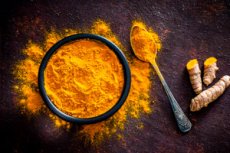Curcumin nanoparticles show promise in treating neurodegenerative diseases
最近審查:14.06.2024

In a recent review article published in Foods, Italian researchers described the neuroprotective role of curcumin and curcumin-containing nanoparticles in neurodegenerative diseases.
Curcumin is a hydrophobic polyphenol found in the rhizome of Curcuma longa. It has a wide range of biological properties, including anti-inflammatory, antioxidant, antiproliferative, anticancer, immunomodulatory, antimicrobial, antidiabetic and neuroprotective functions.
These pharmacological properties make curcumin a promising candidate for the treatment of neurodegenerative diseases such as Parkinson's disease (PD), Alzheimer's disease (AD), Huntington's disease (HD), multiple sclerosis (MS), amyotrophic lateral sclerosis (ALS) and prion diseases.
Problems of using curcumin
However, the clinical use of curcumin is limited due to its low water solubility, poor stability, rapid metabolism, slow absorption rate, low bioavailability and poor ability to cross the blood-brain barrier.
Curcumin nanoparticles
To overcome these limitations, curcumin-containing biomimetic nanomedicines made using cell membranes and extracellular vesicles have been developed. Curcumin-containing porous polylactic-glycolic acid (PLGA) polymer nanoparticles were modified with red blood cell membranes to enhance drug release. Curcumin-containing exosomes were developed to increase their ability to cross the blood-brain barrier and facilitate drug delivery to the brain for the treatment of malignant glioma in mice.
Curcumin for Parkinson's disease (PD)
PD occurs due to loss of dopaminergic neurons in the substantia nigra. The main features of PD include dopamine deficiency in the brain and the formation of α-synuclein aggregates.
Curcumin-containing nanoformulations are emerging as a promising adjunctive therapy for PD. Various nanoformulations such as alginate-curcumin nanoparticles, curcumin nanoparticles with lactoferrin, spongosomes and cubosomes with curcumin and fish oil, serum albumin-based curcumin nanoformulation and glyceryl monooleate (GMO) nanoparticles loaded with curcumin and piperine have shown reduction in oxidative stress, cell death brain and protein aggregation in animal models of PD.
Curcumin for Alzheimer's disease (AD)
AD occurs due to the accumulation of misfolded β-amyloid protein and tau protein in the neurofibrillary tangles of the brain.
As a therapeutic agent for AD, curcumin reduces inflammation, activates neurogenesis, and inhibits the accumulation of misfolded proteins. In in vitro cell culture models of AD, curcumin encapsulated in biodegradable PLGA nanoparticles reduces oxidative stress and inflammation, and increases protein degradation.
Curcumin for Huntington's disease (HD)
HD is an autosomal dominant inherited disorder caused by a mutation in the Huntingtin gene (HTT). The disease is characterized by the progressive loss of nerve cells in the brain, leading to motor and cognitive impairment and psychiatric symptoms.
In rat models of HD, curcumin encapsulated in solid lipid nanoparticles improves mitochondrial activity, reduces mitochondrial swelling, free radical production and lipid peroxidation, and increases antioxidant levels.
Curcumin for amyotrophic lateral sclerosis (ALS)
ALS occurs due to the progressive loss of nerve cells in the spinal cord and brain. The only known treatment for ALS that prolongs survival of patients in the early stages of the disease is riluzole.
Curcumin loaded into inulin-D-α-tocopherol succinate micelles enhances the therapeutic effects of mesenchymal stromal cells.
Curcumin for multiple sclerosis (MS)
MS is an inflammatory autoimmune disease that damages the myelin sheath of nerve fibers in the spinal cord and brain. There is currently no cure for this disease.
Conclusion
Curcumin and curcumin-containing nanoparticles show significant potential in the treatment of neurodegenerative diseases due to their antioxidant, anti-inflammatory and neuroprotective properties. Further research and development may lead to the creation of new effective treatments for these diseases.

